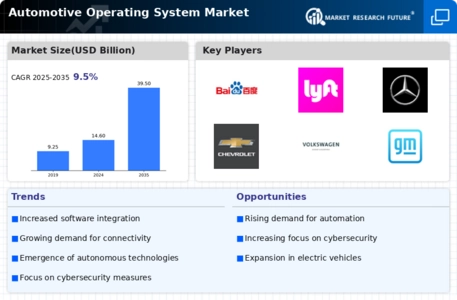Automotive Operating System Market Summary
As per MRFR analysis, the Automotive Operating System Market Size was estimated at 14.56 USD Billion in 2024. The Automotive Operating System industry is projected to grow from 15.95 USD Billion in 2025 to 39.53 USD Billion by 2035, exhibiting a compound annual growth rate (CAGR) of 9.5 during the forecast period 2025 - 2035.
Key Market Trends & Highlights
<p>The Automotive Operating System Market is experiencing robust growth driven by technological advancements and evolving consumer preferences.</p>
- The North American region remains the largest market for automotive operating systems, characterized by a strong demand for advanced connectivity features.
- Asia-Pacific is emerging as the fastest-growing region, propelled by increasing investments in electric vehicle infrastructure and autonomous driving technologies.
- QNX continues to dominate as the largest segment, while Linux is rapidly gaining traction as the fastest-growing operating system in the automotive sector.
- Key market drivers include the integration of advanced driver assistance systems and the rising demand for in-vehicle infotainment systems, particularly in passenger cars.
Market Size & Forecast
| 2024 Market Size | 14.56 (USD Billion) |
| 2035 Market Size | 39.53 (USD Billion) |
| CAGR (2025 - 2035) | 9.5% |
Major Players
Microsoft (US), Google (US), Apple (US), Tesla (US), BlackBerry (CA), NVIDIA (US), Renesas Electronics (JP), Continental (DE), Bosch (DE), Denso (JP)

















